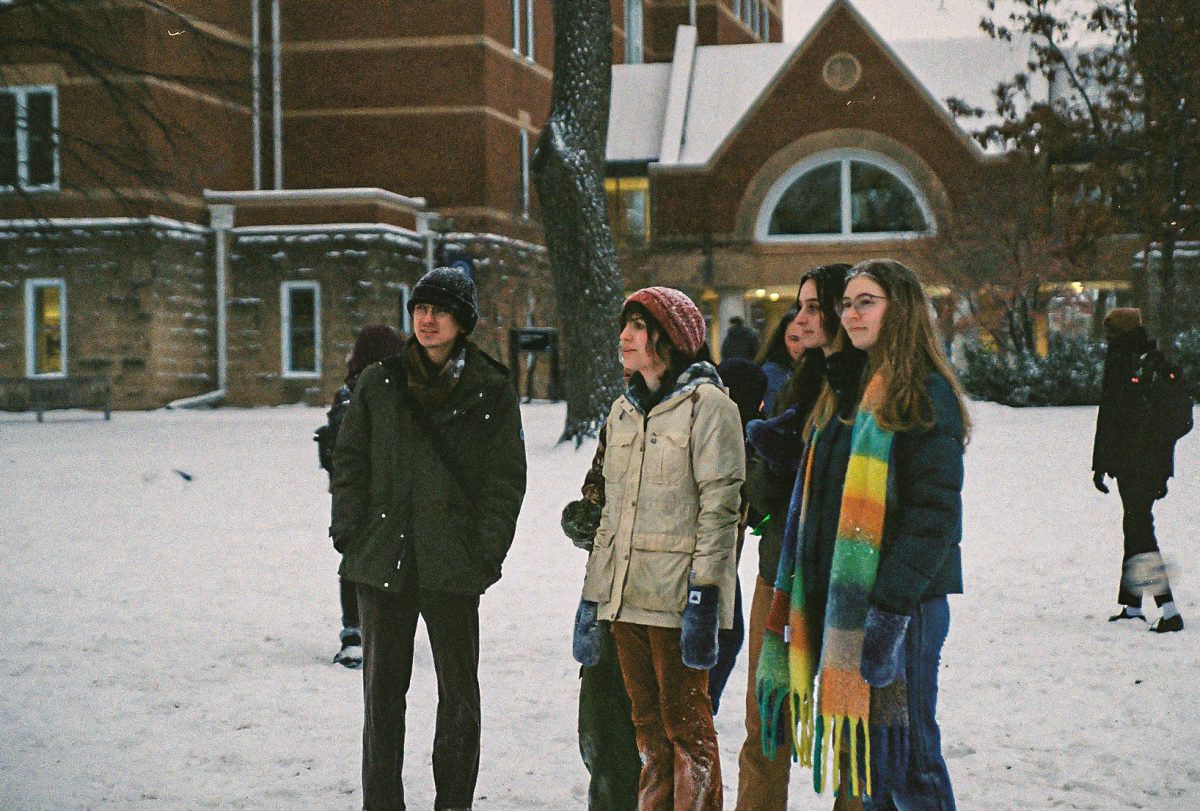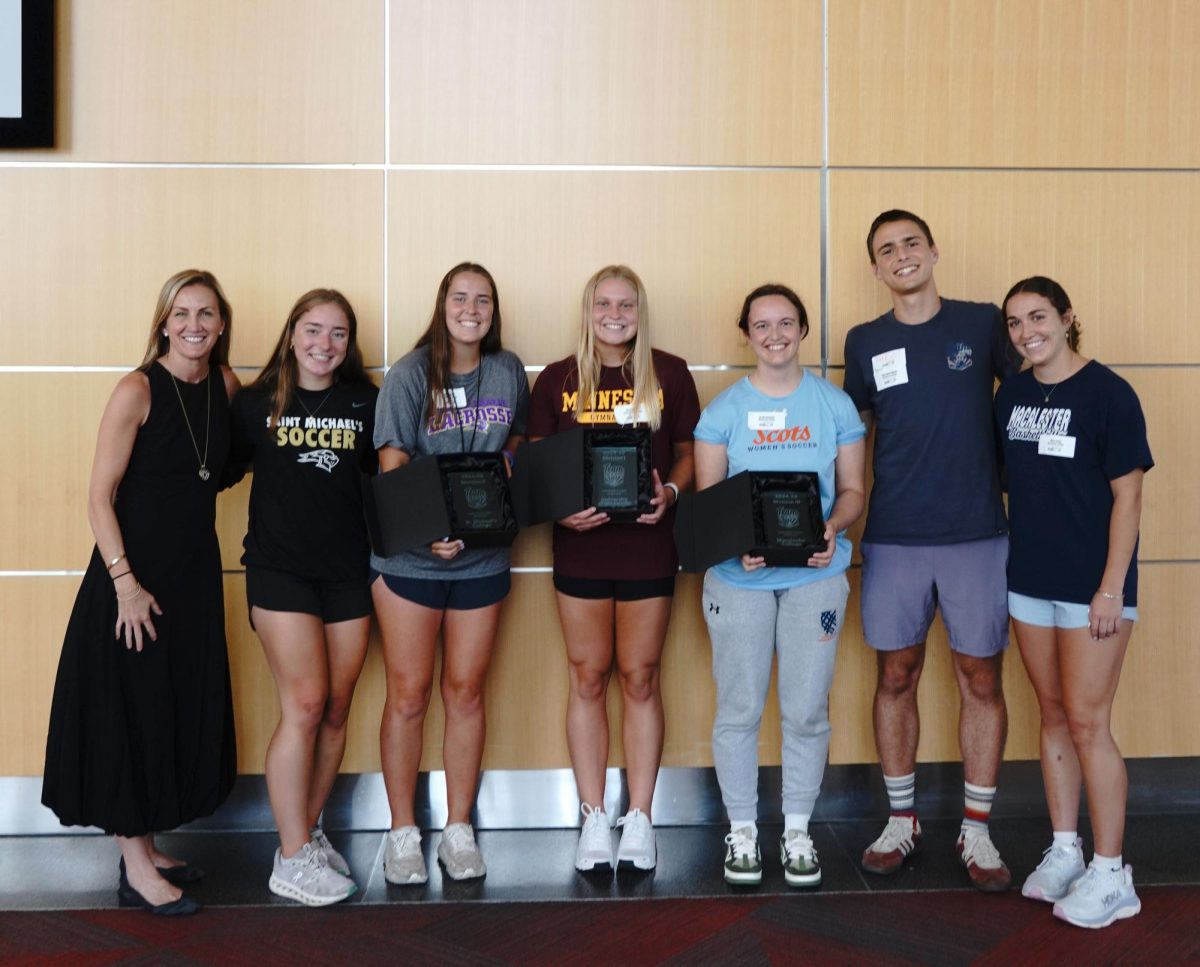By Gordy Moore
Hey Mac! After a lengthy hiatus, I’m back with my long-promised column on pedestrians’ rights. Full disclosure: this subject is near and dear to my heart, as I wrote my capstone in transportation geography on the evolution of pedestrians’ rights and rhetoric from the pre-auto era to today, so I have more than a few opinions to share!
Think for a second about your relationship with streets and roads in America, especially those you encounter every day. As a pedestrian walking around our neighborhood, you may not have an altogether positive relationship with streets—and for good reason! While our immediate neighborhood isn’t the busiest in the city, navigating it is often difficult. During my time at Mac, I have seen probably three dozen very close calls between pedestrians and cars at the Snelling and Grand intersection alone. By “very close calls,” I mean instances in which cars nearly hit pedestrians (who had the walk signal) or when pedestrians literally had to jump out of the way of cars.
There have been at least three Mac students badly injured by cars during my time here. One student was tragically killed in 2012. And yet, these instances are not abnormal in the United States. In 2016, the US had almost 6,000 pedestrian fatalities. This figure does not include injuries (long or short term) caused by car-pedestrian accidents. 2016’s 6,000 pedestrian deaths pale in comparison to the 40,200 citizens who died in motor-vehicle related “accidents” in 2016. This number represented an increase of six percent over 2015.
To put these grim numbers in perspective, if placed as its own category instead of lumped in with the CDC’s category of “accidents,” motor-vehicle related deaths would almost crack the top 10 (currently would be about the 11th highest) for causes of death nationally. Let that sink in for a moment. Even more disturbing: on the aggregate, we as a country are hardly doing anything to stop this. All the other top causes of death (including cancer, heart disease, influenza, diabetes and Alzheimer’s disease) have teams of researchers and millions of dollars poured into prevention and cures.
Why is there precious little alarm over the 40,000 deaths from automobiles, or even the 6,000 of those deaths that were pedestrians? We as a nation have accepted death, injury and fear on our roads as the status quo. Pedestrians struck down are frequently blamed for their own deaths, no matter the circumstances. Yet it was not always this way in America. To cast the street as the car’s domain and to create a culture that accepts death on our roads required nothing less than the redefinition of who has the right to the street.
Peter Norton’s phenomenal book Fighting Traffic: The Dawn of the Motor Age in the American City (2008) formed the theoretical basis of my argument for my capstone paper; I will also draw heavily on his work in this article. In Fighting Traffic, Norton refers to the conglomeration of auto industry interests as ‘motordom,’ a term I will use here.
Pedestrians have been subject to the whims of those using more powerful methods of transportation for centuries, but only within the last century did the relationship between the pedestrian and the street change fundamentally. Before cars, the street was a public space where pedestrians had standing equal to that of other modes of transportation. In the pre-auto world, travelers using various forms of transportation were seen as having more or less the same right to the road, despite the admitted chaos that this arrangement caused. Answers to the questions of who belongs in streets did not result in easy answers – especially not answers favorable to motordom: “Centuries-old cultural and legal legacies led to answers unfavorable to automobiles in cities” (Norton 2007, pg. 16).
American cities did not originally greet cars and their owners with open arms. The conception of the street as a public space could not be swept away without substantial effort on the part of motordom. As death and injuries of pedestrians, bicyclists, horses and other street users increased, car companies faced widespread hostility and even protests. Citizen-organized marches and furious newspaper editorials blamed cars for death – not pedestrians – while activists in Baltimore, St. Louis and Pittsburgh erected public monuments to child accident victims. Auto detractors jeered at drivers, terming them “speed demons” or “juggernauts.”
How did auto companies deal with this backlash? Victim blaming. I found my capstone topic in an article on the origins of the word ‘jaywalking’; I had always thought it was an odd word and wanted to learn from where it came. It turns out: “A ‘jay’ was a hayseed, out of place in the city; a jaywalker was someone who did not know how to walk in a city” (Norton, 2008, p. 72). The term “jaywalker” was created and constructed to belittle nonconforming pedestrians, and, as Norton states, was meant to show that those who did not obey jaywalking laws were uneducated country bumpkins. Once the government, newspaper editors, and the police `joined forces in blaming the victim and claiming the street as an auto-only space, the battle for the right to the street was soon over.
The modern pedestrians’ rights movement emerged in the 1990s, leading up to the Vision Zero movement (only zero road deaths are acceptable) and other policies such as Complete Streets. For the sake of this column, I wanted to get across the basic, shortened history of who was seen as having a right to the street in the pre-auto era and how auto interests moved to solve the public opinion problem by victim-blaming pedestrians. It is important that we understand not only our own rights as pedestrians today, but also why our streets – and therefore, our lives – are the way they are today.
If you have any questions or would like clarification about something I brought up (or for more information!), please email me.






Zoe Mitchell • Sep 11, 2019 at 10:37 am
What i don’t understood is actually how you’re not really much more well-liked than you might be right now. You’re so intelligent. You realize thus significantly relating to this subject, produced me personally consider it from so many varied angles. Its like men and women aren’t fascinated unless it’s one thing to do with Lady gaga! Your own stuffs outstanding. Always maintain it up!
Irene Murray • Sep 10, 2019 at 5:16 am
Can I simply say what a aid to search out somebody who really knows what theyre talking about on the internet. You undoubtedly know easy methods to bring a problem to gentle and make it important. Extra individuals must learn this and perceive this facet of the story. I cant consider youre not more popular since you definitely have the gift.
Frank Glover • Sep 9, 2019 at 6:38 pm
The following time I learn a weblog, I hope that it doesnt disappoint me as a lot as this one. I mean, I know it was my option to read, however I actually thought youd have one thing fascinating to say. All I hear is a bunch of whining about something that you could possibly fix in case you werent too busy looking for attention.